Photographs: Courtesy NASA
T-10, 9 , 8 , 7, 6, 5, 4, 3, 2, 1, 0 and Discovery was on its way to space for one last time, turning over a glorious chapter of space history.
As mission control at the Kennedy Space Centre watched Discovery zoom off to the International Space Station, many took the opportunity to look back at the 352 days the spacecraft spent in space.
It has flown to space more than any other craft. It was the first spacecraft to retrieve a satellite and bring it back to Earth. It has visited two space stations. It launched a telescope that has seen deeper in space and in time than ever before. And twice it has demonstrated the United States' will to persevere following devastating tragedy, returning US to orbit following the two worst accidents in space history.
Although all five vehicles that have comprised NASA's space shuttle fleet are unmatched in achievements, space shuttle Discovery is unique among the extraordinary.
Click on NEXT to know more about Discovery's facts and feats...
Shuttle Discovery's facts and feats
Image: Discovery is shown circled by its 39 mission patches -- including the patch for its final flight, STS-133. The background image was taken from the Hubble Space Telescope, which launched aboard Discovery on STS-31 and serviced by Discovery on STS-82 and STS-103It has travelled almost 143 million miles. That equals 288 round trips to the moon or about one and a half trips to the sun.
Discovery has carried more crewmembers -- 246 -- than any space vehicle. Those have included the first female to ever pilot a spacecraft, the oldest person to fly in space, the first African-American to perform a spacewalk, the first cosmonaut to fly on an American spacecraft and the first sitting member of Congress to fly in space.
Shuttle Discovery's facts and feats
Image: Photo taken on October 9, 1983. NASA's newest space shuttle, Discovery, makes a triumphant fly-by of the Florida Space Coast and the Kennedy Space Centre runway before landingNamed for past sailing ships of exploration, it rolled out of its Palmdale, Calif. assembly plant in October 1983 and was delivered via piggyback airplane flight to NASA' s Kennedy Space Centre the next month.
Discovery's first launch was August 30, 1984 on mission STS-41D.
That flight launched three communications satellites and tested an experimental solar array wing. Astronaut Henry W Hartsfield commanded the mission.
Shuttle Discovery's facts and feats
In 1985, Discovery became the only shuttle orbiter to fly four times in a single year. One of those missions, STS-51D, counted the first sitting member of Congress among its crew, Utah Senator Jake Garn.
After more than a two and a half year hiatus to add safety improvements throughout the shuttle systems following the January 1986 Challenger accident, Discovery took America back to orbit on mission STS-26 in September 1988. Commanded by astronaut Rick Hauck, the mission tested safety improvements and launched a NASA communications satellite. It was Discovery's seventh flight.
Shuttle Discovery's facts and feats
Image: The view of Mir from Space Shuttle Discovery as it left the station during STS-91Discovery moved the fledgling partnership closer on mission STS-63 one year later as it became the first shuttle to rendezvous with the Russian Mir Space Station.
As Discovery flew to within 40 feet of the orbiting complex, the mission broke other barriers as well. Commanded by astronaut James D Wetherbee, the crew included the first female to pilot a US spacecraft -- astronaut Eileen Collins.
Discovery's only other visit to Mir came on mission STS-91 in June 1998, a docking with the space station that ended the Shuttle-Mir Programme. The cooperative effort had seen 9 shuttle missions dock to the Russian station since Discovery's trailblazing rendezvous in 1995.
Shuttle Discovery's facts and feats
Image: Backdropped by a blue and white Earth, Space Shuttle Discovery approaches the International Space Station during rendezvous and docking operationsIn October 2000, Discovery launched on the 100th mission of the Space Shuttle Programme, a flight to the new and growing International Space Station on mission STS-92.
The 12-day mission installed a shuttle docking port on the station and the first piece of the station's exterior truss structure, setting the stage for the arrival of its first resident crew only a few weeks later.
Shuttle Discovery's facts and feats
Image: Handheld still image taken by Discovery's crew of the external fuel tank as it was jettisoned after launch were transmitted to the ground early July 27. Initial analysis of the imagery shows a large piece of foam that separated from the tank during the Shuttle's ascent to orbit. The foam detached from an area of the tank called the Protuberance Air Load (PAL) Ramp. In this still image, the area of missing foam on the tank is indicated by a light white spot in near the upper edge of the tank just below the liquid oxygen feedlineIn February 2003, the world again mourned as shuttle Columbia and her crew were lost during re-entry.
America resolved to continue the shuttle programme and again improve the safety of flight, and NASA again turned to Discovery to return the nation to space on mission STS-114 to the International Space Station.
The mission, commanded by Eileen Collins, included new procedures to ensure the shuttle heat shield was in good condition for the trip home, among them a first of its kind "back flip" as Discovery approached the station to enable the station crew to capture high resolution imagery of the shuttle's heat shield.
Shuttle Discovery's facts and feats
Image: Backdropped by a cloud-covered Earth, Space Shuttle Discovery is featured in this image while docked with the International Space Station during the STS-116 missionDiscovery's STS-116 mission to the space station called for installation of the port five truss segment and a major overhaul of the station's electrical power system.
Problems arose while retracting one of the station's solar arrays, which was to be relocated on a future flight. During the retraction, the array snagged. During two spacewalks, astronauts Bob Curbeam, Sunita Williams and Christer Fuglesang assisted in the retraction by hand, successfully troubleshooting the problem and folding the array.
Shuttle Discovery's facts and feats
Image: The International Space Station is seen from Space Shuttle Discovery as the two spacecraft begin their relative separationDiscovery Commander Pam Melroy flew the shuttle to dock with the space station, which was under the command of astronaut Peggy Whitson.
The mission installed the Harmony module on the complex and relocated and deployed the solar array that had been folded on STS-116. The crew and ground had to improvise as the array was unfolded, installing straps that mended and stabilized the panel.
On STS-124 in May 2008, Discovery headed back to the station to deliver the centerpiece of the Japan Aerospace Exploration Agency's Kibo experiment laboratory. STS-124 was the second of three shuttle flights that delivered the elements to complete the Japanese lab.
Shuttle Discovery's facts and feats
Image: Robonaut2 or R2 for short is the next generation dexterous robot, developed through a Space Act Agreement by NASA and General Motors. It is faster, more dexterous and more technologically advanced than its predecessors and able to use its hands to do work beyond the scope of previously introduced humanoid robotsThe new module will be a storeroom and provide additional research space. Robonaut2 is a technology demonstration to learn how humanoid robots can assist crews in orbit.
Discovery also will carry a host of spare equipment to be stored aboard the complex. Befitting the milestones that have punctuated Discovery's career, its final visit to the station will coincide with the 10-year anniversary of a permanent human presence aboard the outpost.

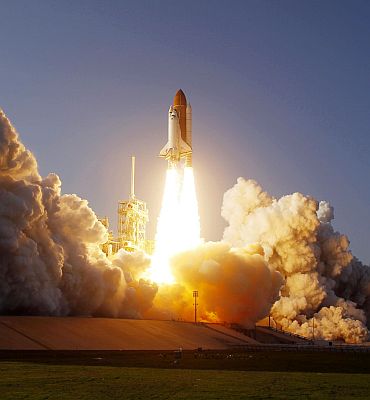

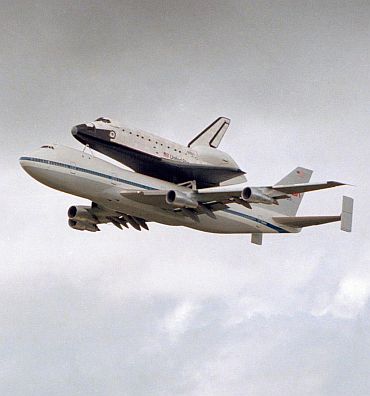

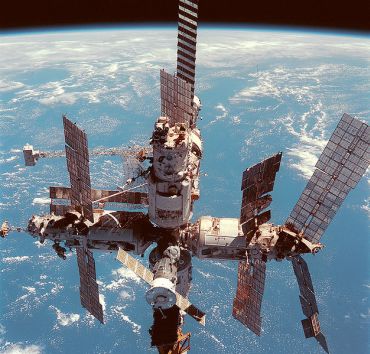

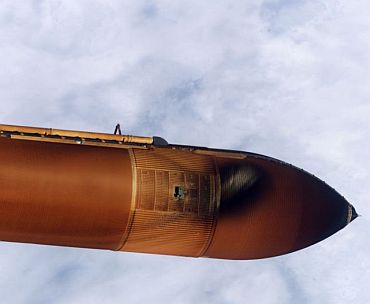
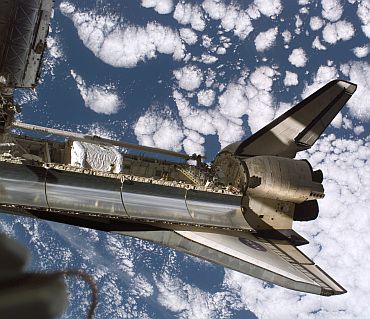
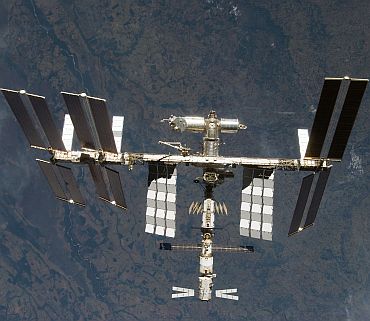

article